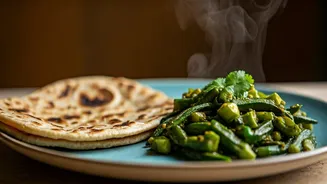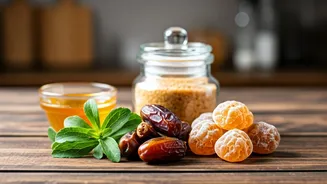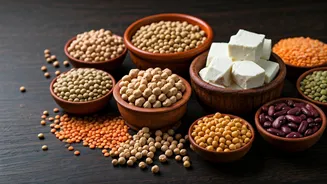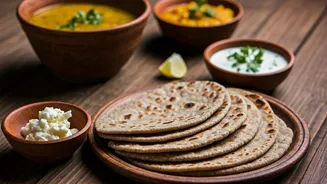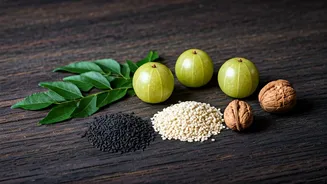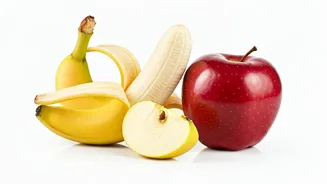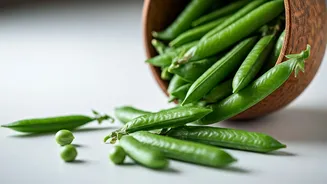Bhindi and Roti
Bhindi (okra) and roti form a common and beloved lunch combination in many Indian households. Bhindi, known for its distinct texture, provides a source
of fiber, vitamins, and minerals. Roti, a staple made from wheat flour, offers carbohydrates, providing the body with energy. However, while this meal is convenient and culturally significant, a closer look at its nutritional profile is essential to determine if it meets the requirements of a well-balanced diet. Regular consumption of the same meal can lead to imbalances, making it crucial to understand the individual benefits and potential drawbacks of bhindi-roti and to consider ways of incorporating more nutrients for a healthier lunch.
Nutrient Powerhouse: Bhindi
Bhindi is a vegetable that boasts a range of nutritional advantages. It is a good source of dietary fiber, promoting healthy digestion and helping to prevent constipation. This fiber also contributes to feelings of fullness, which can aid in weight management. Bhindi is also rich in several vitamins and minerals, including vitamin C, which boosts the immune system, and vitamin K, essential for blood clotting. Furthermore, it contains folate, important for cell growth and development, especially during pregnancy. The antioxidants present in bhindi help to fight against cell damage caused by free radicals. Including bhindi in your diet contributes to overall well-being, providing essential nutrients that support various bodily functions and promote good health.
Benefits of Fiber
The high fiber content of bhindi is a standout feature, contributing significantly to digestive health. Fiber aids in regulating bowel movements, reducing the likelihood of constipation and promoting a healthy gut environment. This process facilitates the efficient absorption of nutrients from other foods. A diet rich in fiber can also lower cholesterol levels, reducing the risk of heart disease. Furthermore, fiber helps to regulate blood sugar levels by slowing down the absorption of sugar into the bloodstream. This is particularly beneficial for individuals with diabetes or those at risk of developing the condition. The combination of these effects makes fiber a crucial component of a balanced diet, promoting overall health and preventing several chronic diseases, further highlighting the benefits of including bhindi in a meal.
Roti's Carbohydrates and More
Roti primarily provides carbohydrates, which are the body's main source of energy. It is a staple food across India and a significant source of calories. Along with carbohydrates, roti also offers a modest amount of protein and fiber, contributing to a feeling of fullness and aiding in digestion. However, the nutritional profile of roti can vary depending on the type of flour used. Whole wheat roti, made from whole grains, offers more fiber and essential nutrients compared to roti made from refined flour. Roti's impact on blood sugar levels should also be considered, as it can be high in carbohydrates, leading to a rapid rise in blood sugar, especially if eaten in excess. Balancing roti with other nutrient-rich components in the meal, such as vegetables and proteins, can help mitigate these effects.
Daily Meal Concerns
Consuming the same meal, like bhindi-roti, daily could lead to certain nutritional imbalances. While bhindi offers several vitamins, minerals, and fiber, and roti provides energy in the form of carbohydrates, a consistent reliance on this combination may result in deficiencies in other essential nutrients. The absence of diverse food sources could mean insufficient intake of crucial elements like healthy fats, additional proteins, and various micronutrients such as iron and vitamin B12, which are essential for different bodily functions. To create a well-rounded diet, it's essential to incorporate a variety of foods, promoting a balanced intake of nutrients and supporting overall health. Introducing a wider range of ingredients is necessary to help offset any nutrient gaps that arise.
Balancing Your Lunch
To make bhindi-roti a more balanced lunch option, various additions can be made. Adding a serving of dal (lentils) or another source of protein, such as paneer (Indian cheese) or eggs, can enhance the protein content, which is essential for muscle repair and growth. Including a side of salad, such as a mix of colorful vegetables like tomatoes, cucumbers, and onions, provides essential vitamins, minerals, and antioxidants. Incorporating a small portion of healthy fats, such as a drizzle of olive oil or a handful of nuts, is also beneficial. Moreover, varying the type of roti, such as opting for whole wheat roti or roti made from other grains, can increase the fiber and nutrient intake. These modifications help ensure that the meal provides a broader range of nutrients, supporting a healthier eating pattern.
